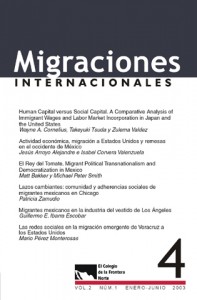
For the United States, the most commonly used model of immigrant labor-market incorporationanalyzes earnings largely as a function of human-capital variables. However,this simple model is not necessarily applicable cross-culturally and may lose much of itsexplanatory power in other societies, where immigrants encounter different labor-marketconditions. This article evaluates multivariate models of wage determination forsamples of foreign workers interviewed in 1996 in San Diego County, California, andthe Japanese industrial city of Hamamatsu. In contrast to San Diego, the standard measuresof human capital do not significantly influence immigrant wages in Hamamatsu.Instead, social capital has a much greater impact on immigrant wages in Japan than inthe United States. Ethnographic research conducted at both sites suggests explanationsfor these divergent results and illustrates the importance of reception contexts (host societies)in determining labor-market outcomes for immigrant workers.RESUMENEl modelo de incorporación de inmigrantes al mercado de trabajo más comúnmente usadoen los Estados Unidos analiza en gran medida los ingresos como una función de variablesde capital humano. Sin embargo, este modelo no es necesariamente aplicable a diferentesculturas y puede perder mucho de su poder explicativo en sociedades donde los inmigrantesse enfrentan a diferentes condiciones del mercado laboral. Este artículo evalúa modelosmultivariados para la determinación de salarios usando como muestra a trabajadoresinmigrantes, entrevistados en 1996 en el condado de San Diego, California, y en la ciudadindustrial japonesa de Hamamatsu. En contraste con San Diego, las medidas estándar decapital humano no influyen significativamente en los salarios de inmigrantes en Hamamatsu.Por su parte, el capital social tiene mucho más impacto en los salarios de los trabajadoresinmigrantes en Japón que en los Estados Unidos. La investigación etnográfica realizada enlos dos lugares sugiere explicaciones para estos resultados divergentes e ilustra la importanciade los contextos de recepción (sociedades receptoras) para determinar los escenarios delmercado de trabajo para trabajadores inmigrantes.

También puede {advancedSearchLink} para este artículo.